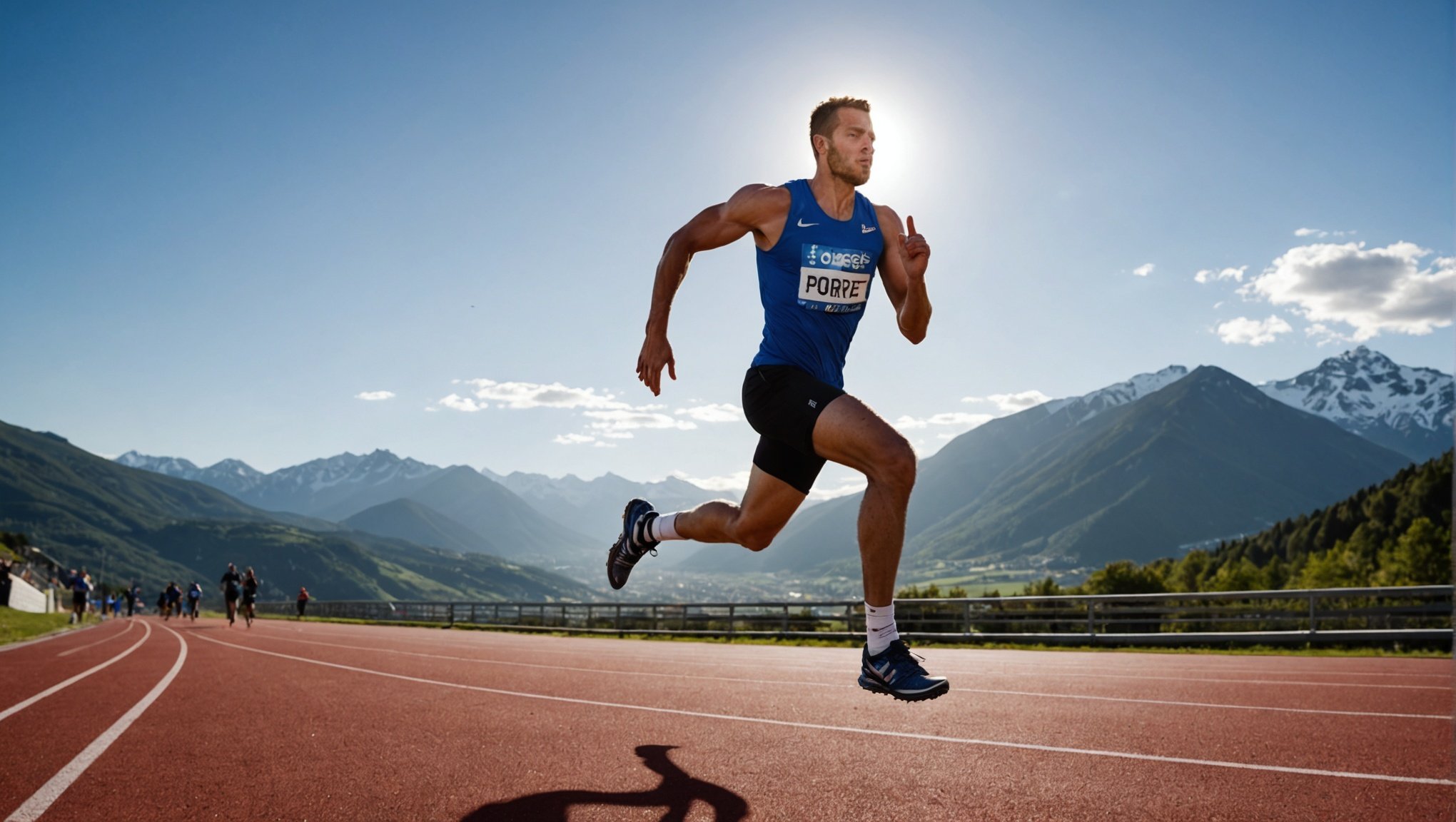Unlocking Peak Performance: The Power of Mental Imagery for Athletes in High-Pressure Moments
The Importance of Mental Imagery in Sports
When it comes to achieving peak performance in sports, the physical aspects of training are often the first things that come to mind. However, the mental game is just as crucial, if not more so, especially in high-pressure moments. Mental imagery, a key component of sports psychology, has been proven to be a powerful tool that helps athletes perform at their best even under intense pressure.
Mental imagery, or visualization, involves mentally rehearsing a specific scenario or performance, imagining oneself performing at their best. This technique is not just a fancy gimmick; it is a scientifically-backed method that has been used by elite athletes across various sports to enhance their performance.
In the same genre : Enhancing Wave Stability: The Role of Balance Boards in Professional Surfing Training
How Mental Imagery Works
The Science Behind Visualization
Visualization works by engaging the brain’s neural pathways in a way that is similar to actual physical practice. When athletes visualize themselves performing a task, the brain processes this mental rehearsal as if it were real, strengthening the connections between neurons and improving muscle memory. This can lead to improved performance, as the brain and body become more synchronized and prepared for the actual event.
Real-Life Examples
Many top athletes swear by the power of mental imagery. For instance, Olympic athletes often report using visualization techniques to prepare for their events. They might visualize themselves winning, overcoming obstacles, or performing flawlessly under pressure. This mental rehearsal helps build confidence, focus, and mental toughness – all essential for peak performance.
Topic to read : Maximizing Open Water Performance: Training Strategies for Professional Swimmers”
Techniques for Effective Mental Imagery
Visualization Techniques
There are several visualization techniques that athletes can use to enhance their performance:
- Goal-Oriented Visualization: Imagine yourself achieving your specific goals. For example, a golfer might visualize sinking a putt or a runner might see themselves crossing the finish line first.
- Process-Oriented Visualization: Focus on the steps and processes involved in achieving your goal. A tennis player might visualize each shot, from the serve to the volley.
- Emotional Visualization: Incorporate the emotions you want to feel during the performance. A football player might visualize the excitement and confidence of scoring a touchdown.
Here is a detailed list of steps to practice effective visualization:
- Find a Quiet and Comfortable Space: Ensure you are in a place where you can focus without distractions.
- Set Clear Goals: Define what you want to achieve through your visualization.
- Use All Senses: Engage all your senses – see, hear, feel, and even smell the scenario you are visualizing.
- Practice Regularly: Consistency is key. Set aside time each day to practice visualization.
- Stay Positive: Focus on positive outcomes and emotions to build confidence and motivation.
The Role of Mental Imagery in Building Confidence and Focus
Confidence Through Visualization
Confidence is a cornerstone of athletic performance, and mental imagery can significantly boost an athlete’s self-belief. By visualizing success, athletes can reinforce positive self-talk and develop a stronger sense of self-efficacy. For example, a basketball player who visualizes making crucial shots can enter the game with a heightened sense of confidence, which can translate into better performance on the court.
Enhancing Focus and Concentration
Mental imagery also helps athletes maintain focus and concentration, even in high-pressure situations. Techniques such as mindfulness and attentional control, often used in conjunction with visualization, can help athletes stay calm and focused. Here’s how:
- Mindfulness: Practices like deep breathing, meditation, and body scans help athletes stay present and avoid distractions.
- Attentional Control: Using cue words or focusing on specific aspects of the game can help athletes maintain their concentration.
Mental Imagery and Mental Toughness
Developing Mental Toughness
Mental toughness is the ability to perform at one’s best even under pressure or in challenging circumstances. Mental imagery is a key tool in developing this toughness. By visualizing themselves overcoming obstacles and performing well under stress, athletes can build resilience and learn to manage stress more effectively.
Case Study: Elite Athletes
Elite athletes often attribute their success to their mental toughness, which they develop through rigorous mental training, including visualization. For instance, professional athletes like LeBron James and Serena Williams have spoken about the importance of mental preparation and visualization in their training regimens.
Integrating Mental Imagery into Training
Combining Physical and Mental Training
Physical training is essential, but it should be complemented with mental training to achieve peak performance. Here’s how athletes can integrate mental imagery into their daily training:
- Pre-Performance Visualization: Before a game or competition, take a few minutes to visualize yourself performing well. This can help calm nerves and boost confidence.
- Post-Performance Reflection: After a performance, reflect on what went well and what didn’t. Visualize how you can improve in the next event.
- Regular Mental Practice: Incorporate visualization into your daily routine, just as you would any physical training session.
Practical Insights and Actionable Advice
Creating a Personalized Visualization Plan
To make the most out of mental imagery, athletes should create a personalized plan that aligns with their specific goals and needs. Here are some steps to follow:
- Identify Your Goals: Clearly define what you want to achieve through visualization.
- Choose Your Techniques: Select the visualization techniques that work best for you.
- Schedule Regular Practice: Make visualization a part of your daily routine.
- Seek Professional Help: If needed, consult with sports psychologists who can provide tailored advice and support.
Table: Comparing Different Mental Imagery Techniques
| Technique | Description | Benefits | Examples |
|---|---|---|---|
| Goal-Oriented Visualization | Visualize achieving specific goals. | Boosts confidence, focuses on outcomes. | Visualizing winning a championship. |
| Process-Oriented Visualization | Focus on the steps involved in achieving goals. | Improves skill execution, enhances focus. | Visualizing each shot in a golf game. |
| Emotional Visualization | Incorporate desired emotions into visualization. | Enhances motivation, builds positive emotions. | Visualizing the excitement of scoring a goal. |
| Mindfulness | Stay present through deep breathing, meditation, etc. | Reduces stress, improves concentration. | Using mindfulness to stay calm before a competition. |
| Attentional Control | Focus on specific aspects of the game. | Maintains concentration, reduces distractions. | Using cue words to stay focused during a game. |
Quotes from Experts and Athletes
- “Visualization is a powerful tool that can help athletes develop the mental toughness needed to perform at their best, even under pressure.” – Sports Psychologist
- “I visualize myself making every shot, every pass, every tackle. It gives me the confidence to perform at my best when it matters most.” – Professional Athlete
- “Mental imagery is not just about seeing yourself succeed; it’s about feeling the emotions and sensations of success. That’s what makes it so powerful.” – Sports Psychologist
Mental imagery is a potent tool in the arsenal of any athlete seeking to achieve peak performance. By incorporating visualization techniques into their training regimen, athletes can build confidence, enhance focus, and develop the mental toughness necessary to excel in high-pressure moments. Whether through goal-oriented visualization, process-oriented visualization, or emotional visualization, the benefits of mental imagery are clear and compelling.
In the words of a renowned sports psychologist, “Winning starts in the mind, and with the help of sport psychology, athletes can unlock their full potential and achieve success on and off the field.”
So, the next time you’re preparing for a big game or competition, remember that your mind is just as important as your body. Take a few minutes to visualize your success, and watch how it can transform your performance.













